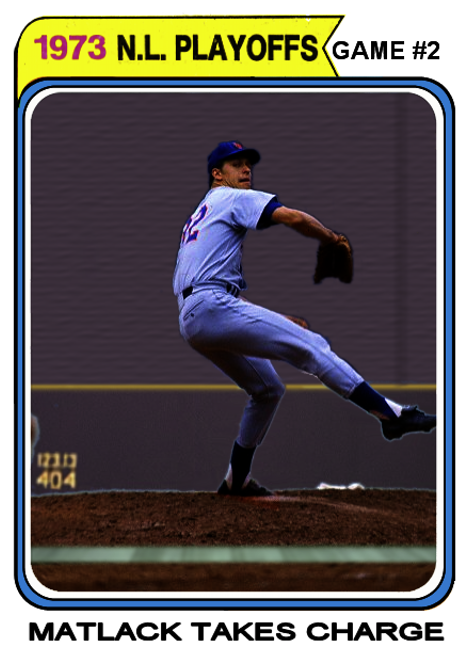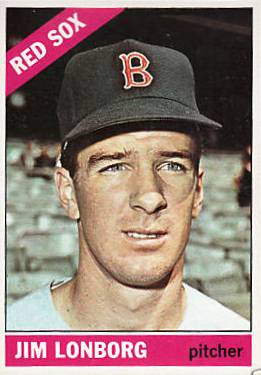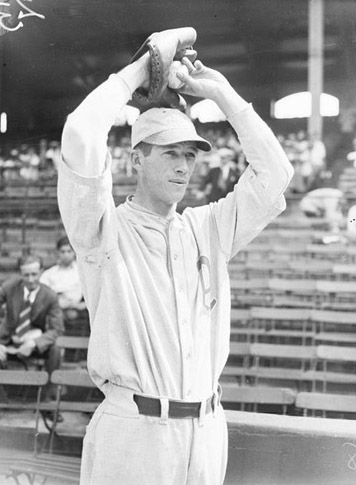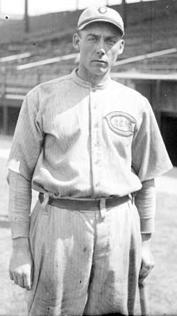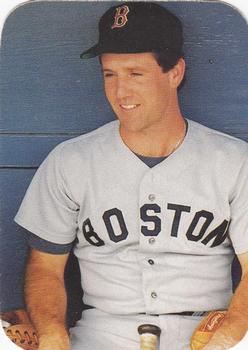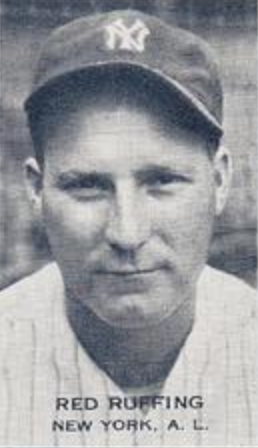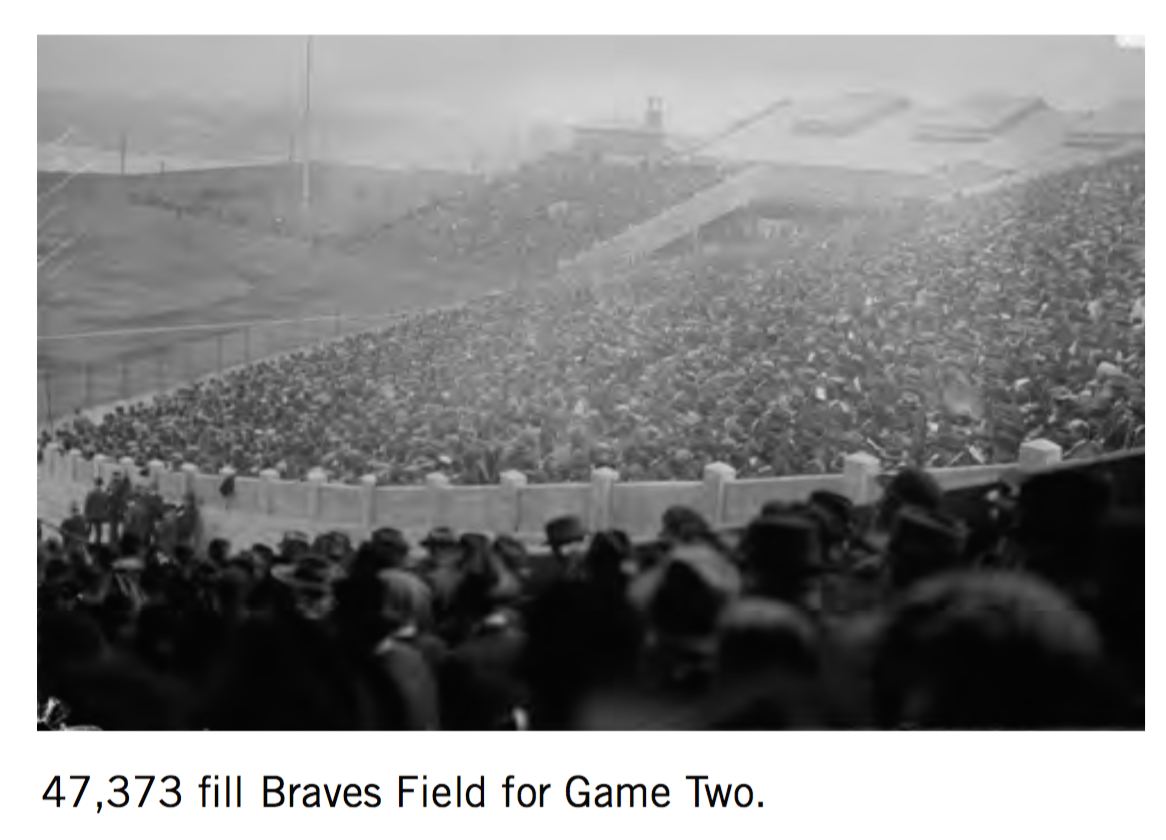October 7, 1916: Red Sox win a World Series home game — a mile away from home
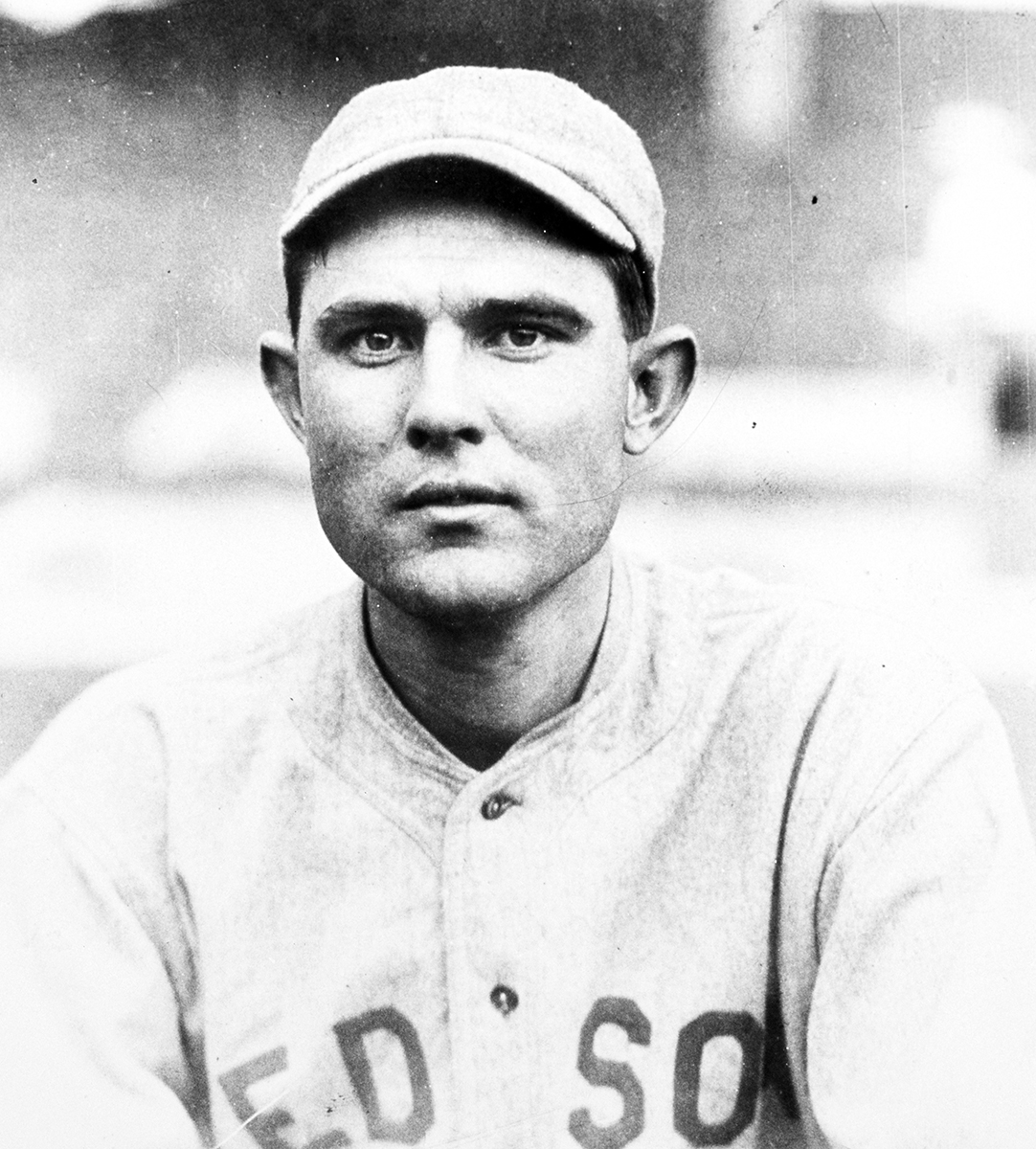 The 1916 season began with the reigning world champion Boston Red Sox featuring much the same roster as the year before. The two major changes were the loss of Tris Speaker and Smoky Joe Wood. Considering their iconic status, one might have expected the losses to have hurt more than they did.
The 1916 season began with the reigning world champion Boston Red Sox featuring much the same roster as the year before. The two major changes were the loss of Tris Speaker and Smoky Joe Wood. Considering their iconic status, one might have expected the losses to have hurt more than they did.
Tillie Walker took over in center field for the holdout Speaker, who had been sold to the Cleveland Indians, but that was really the only significant change in the lineup.
Stout and Johnson write that despite a slow start, “Once the club adjusted to Speaker’s absence, they began to respond to [Red Sox manager Bill] Carrigan, a master motivator.”1
The team as a whole performed as well relative to the other contenders as it had in 1915, finishing two games ahead of second-place Chicago. On September 18 the Red Sox had climbed into first place for good.
They won 91 games, as opposed to 101 in 1915, but it was enough to allow them to hoist another pennant at Fenway Park. For the second year in a row, however, the Red Sox borrowed the larger-capacity Braves Field for their home games. In the World Series, the repeating Red Sox faced the Brooklyn Robins, who had beat out the Phillies by 2½ games.
The Brooklyn team’s ERA (2.12) was much better than Boston’s 2.48, and the Robins’ .261 team batting average was higher as well (the Red Sox hit .248). Brooklyn looked to be a formidable opponent.
The Boston Globe’s Tim Murnane expected Brooklyn to break through first, to “start with a rush.” He added, “The Red Sox seldom start like winners, but manage to tighten up and show as the game and contests lengthen out.”2
Neither manager announced his pitcher beforehand. The Robins’ Rube Marquard (13-6, 1.58 ERA) was expected to face the unorthodox submariner Carl Mays (18-13, 2.39), according to the newspapers the morning of the first game. Columnist Hugh Fullerton anticipated a Babe Ruth/Marquard matchup in Game Two, and picked the Red Sox to win in five games with Jack Coombs pitching and winning for Brooklyn in the third game of the five. He didn’t expect Boston’s Rube Foster to be used at all, given that he’d had an off year.
A capacity crowd of 36,117 jammed Braves Field. Interest in the game was such that a “special wire from Braves Field” was hooked up and an estimated 15,000 fans stood in the streets outside the Boston Herald-Traveler offices on Tremont Street to hear telegraphed news of each play relayed via megaphone and to see plays reflected on a special scoreboard erected by the newspaper.3
Though Boston’s Bill Carrigan had Ernie Shore (16-10, 2.63) warming up, the Robins expected Carrigan to call on Babe Ruth (23-12, 1.75) at the last minute, so they took batting practice as though they’d be facing the left-hander. Carrigan chose Shore, however, and Brooklyn manager Wilbert Robinson led with Rube Marquard.
The Robins made a weak showing of it in the top of the first, not getting a ball out of the infield. In the bottom of the first, after two men were out, Tillie Walker tripled to the wall in left, but first baseman Dick Hoblitzell grounded out to end the inning.
The Robins got two men on base in the second, but didn’t score. In the bottom of the second the Red Sox put three men on – two on Marquard walks – but didn’t score, though only after Harry Hooper’s two-out smash to Hi Myers in deep right-center field saw the Brooklyn man “fairly robbing” Hooper of a bases-clearing hit.4
Myers singled in Brooklyn’s third, but was left stranded. With two outs, the Red Sox put the first run on the board with back-to-back extra-base hits – a triple on a 3-and-2 count by Hoblitzell that went over right fielder Casey Stengel’s head and a “fierce liner” of a double down the left-field line by Duffy Lewis. Lewis was then picked off second base when Brooklyn’s catcher, Chief Meyers, fired to shortstop Ivy Olson.
Stengel singled to center field to lead off the fourth, and Zack Wheat banged one of Shore’s pitches for a triple that hit the right-field wall, evening the score at 1-1. Second baseman George Cutshaw hit into an unusual double play, when Hooper raced in and – as he slipped and fell – caught Cutshaw’s shallow fly ball, and then hopped up in time to throw on the fly directly to catcher Hick Cady, who erased Wheat at the plate. The Washington Post correspondent termed it “one of the most brilliant plays ever witnessed on a ball field.”5
With just one out, Meyers tripled in Brooklyn’s fifth but again the Robins couldn’t get him safely home. The Red Sox re-established the lead, 2-1, in the bottom of the fifth when Hooper led off with a double to center that Myers lost in the sun, took third on second baseman Hal Janvrin’s bunt, and scored when Walker singled to left field.
The Red Sox broke the game open in the bottom of the seventh. Janvrin doubled down the left-field line to kick things off. Walker reached safely as Ivy Olson’s error allowed Janvrin to get to third; he may have been a bit hasty in anticipating the double play and flubbed the catch. Then it was Cutshaw’s turn for an infield error as he tried to scoop up a grounder and throw to home plate, but merely knocked the ball down instead; Hoblitzell reached first and Janvrin scored. After Lewis pushed both runners up a base with a sacrifice, Larry Gardner reached on a fielder’s choice and Walker scored. Everett Scott’s sacrifice fly brought in Hobby. It was 5-1, Red Sox.
One of the four double plays the Sox turned wiped out another Robins runner in the eighth. It was quite a play, a rocket of a ball that caromed off Shore’s glove and then off his ankle directly to Janvrin, who stepped on second and threw to first. With Jeff Pfeffer now pitching in place of Marquard, the Red Sox ran the score to 6-1 in the bottom of the eighth as Hooper walked and Janvrin singled. Stengel committed the Robins’ fourth error of the game by throwing the ball so far from any possible fielder that Hooper was able to come all the way home on the single to right.
It was a good thing for the Red Sox that they’d built up a five-run lead because the Robins pecked away at Shore in the top of the ninth “as the evening mist was circling in about Braves Field.”6 After walking Brooklyn team captain Jake Daubert on four pitches and giving up a single to Stengel, Shore hit Cutshaw in the ribs, loading the bases with one out. Janvrin’s error on Mike Mowrey’s drive allowed two runs to score. Olson hit one on a hop to Gardner, who gloved the ball but couldn’t make a play. The bases were loaded again. Meyers popped out to Hobby at first for the second out, but Shore walked pinch-hitter Fred Merkle, forcing in a run. Manager Carrigan had seen enough, and changed the whole battery, bringing in “Underhanded Carl Mays”7 to pitch and Pinch Thomas to catch. The next batter, Hi Myers, bounced a single over Mays’ head to bring the score to 6-5 with the bases still loaded. Daubert hit a hot grounder that got by third baseman Gardner, but shortstop Everett Scott ranged far to his right, snared the ball, and threw a perfect strike to Hoblitzell to just nip Daubert and save the game.
Scoring four runs in the top of the ninth, and leaving the bases full of Robins, had put a scare into the Red Sox and their fans, who left Braves Field somewhat subdued, but relieved that Boston had held on to win.
This article appeared in “Braves Field: Memorable Moments at Boston’s Lost Diamond” (SABR, 2015), edited by Bill Nowlin and Bob Brady. To read more articles from this book, click here. It is adapted from Bill Nowlin and Jim Prime’s “From The Babe to the Beards” (Sports Publishing, 2014), itself an adaptation of the two authors’ “The Red Sox World Series Encyclopedia” (Rounder Books, 2008).
Sources
In addition to the sources mentioned in the Notes, the author consulted baseball-reference.com, and retrosheet.org.
http://www.baseball-reference.com/boxes/BOS/BOS191610070.shtml
http://www.retrosheet.org/boxesetc/1916/B10070BOS1916.htm
Photo credit: Ernie Shore, SABR-Rucker Archive.
Notes
1 Glenn Stout and Richard A. Johnson, Red Sox Century (Boston: Houghton Mifflin, 2000), 110.
2 Boston Globe, October 7, 1916.
3 The account of the fans outside their office was printed in the October 8 Boston Herald. Traffic was not disrupted, most of the crowd watching from across the street on the Boston Common.
4 All quotations are from the Boston Globe, October 8, 1916, except as noted.
5 Washington Post, October 8, 1916.
6 Boston Herald, October 8, 1916.
7 Boston Herald, October 8, 1916.
Additional Stats
Boston Red Sox 6
Brooklyn Robins 5
Game 1, WS
Braves Field
Boston, MA
Box Score + PBP:
Corrections? Additions?
If you can help us improve this game story, contact us.



